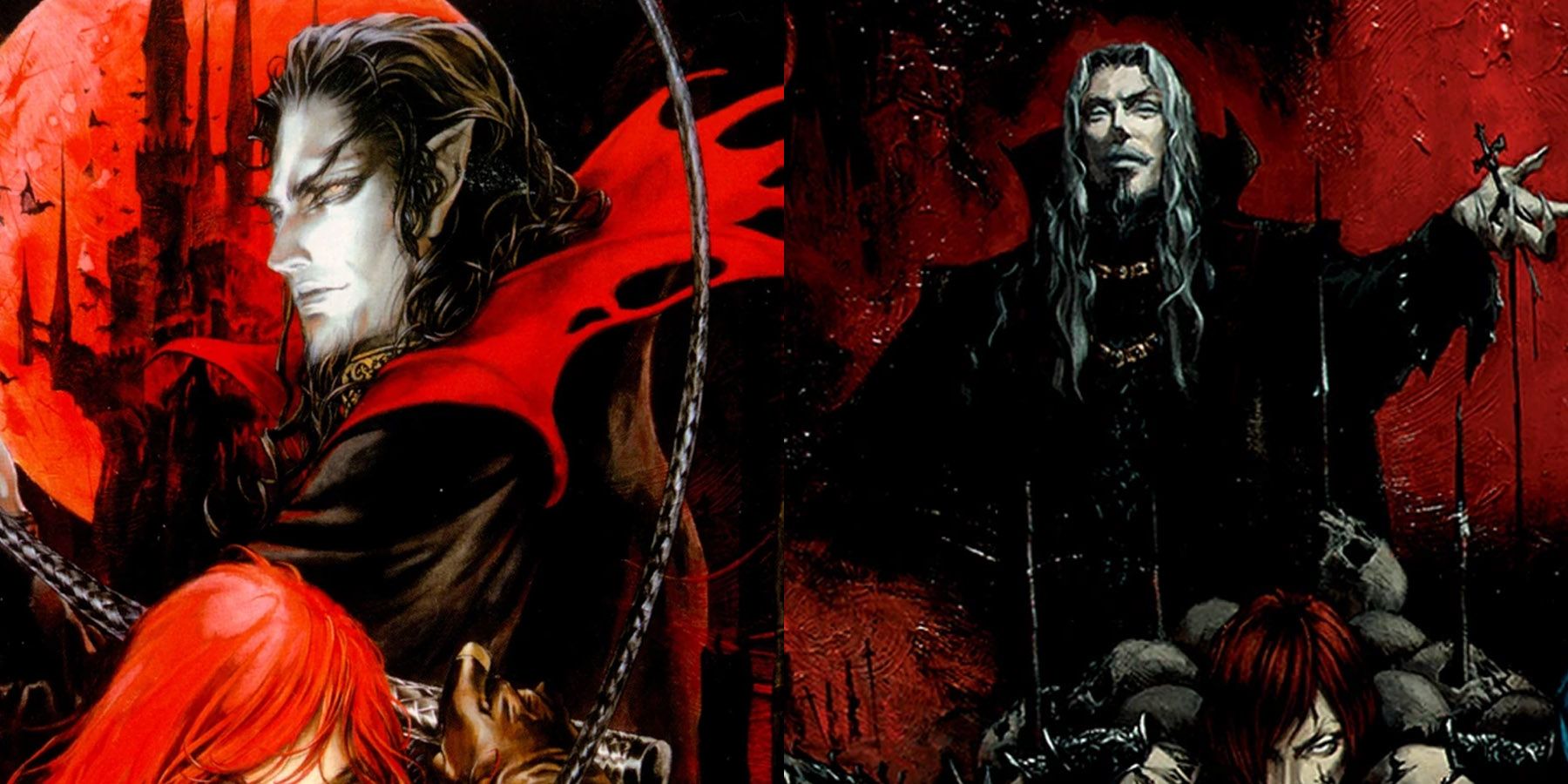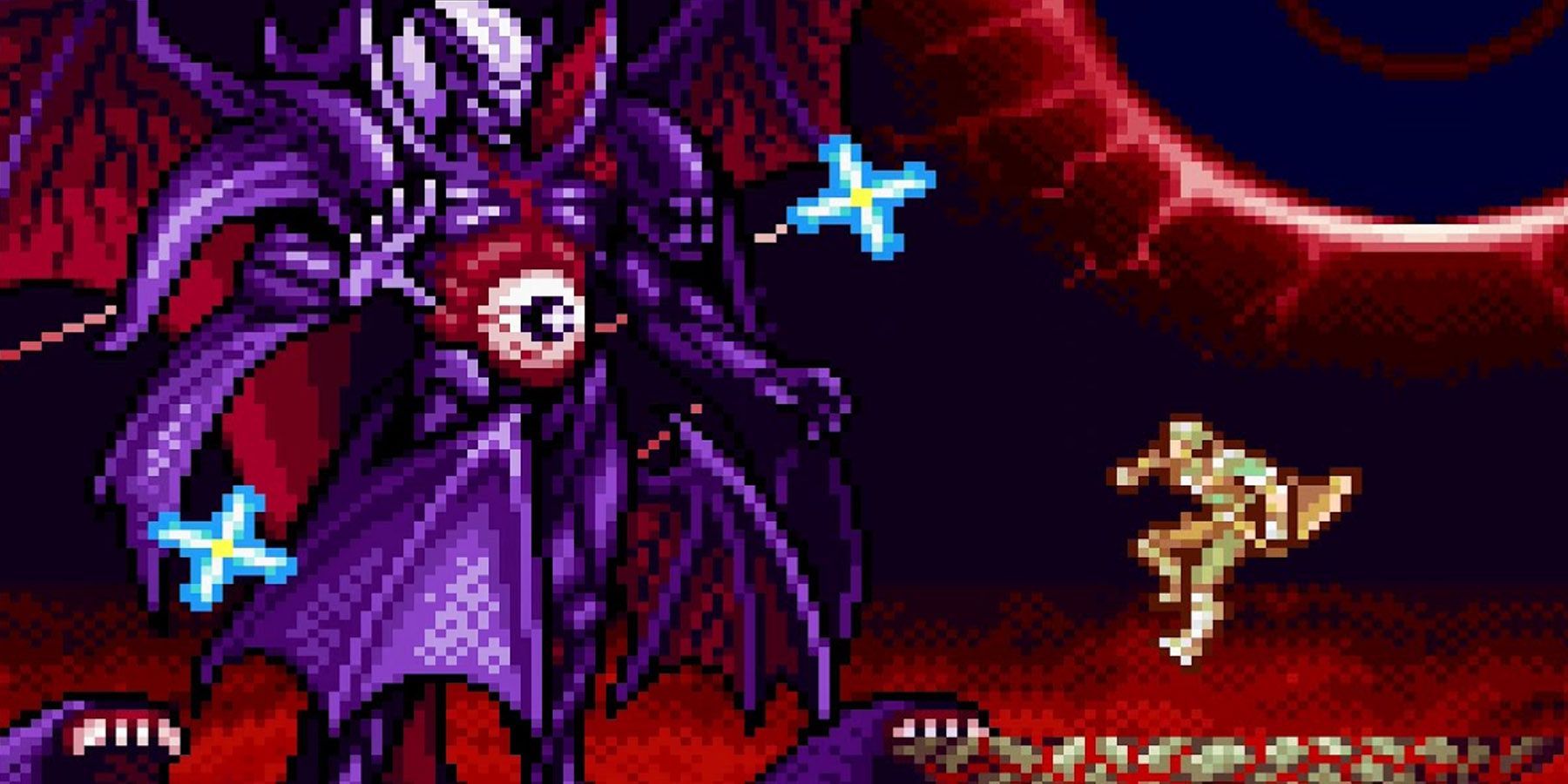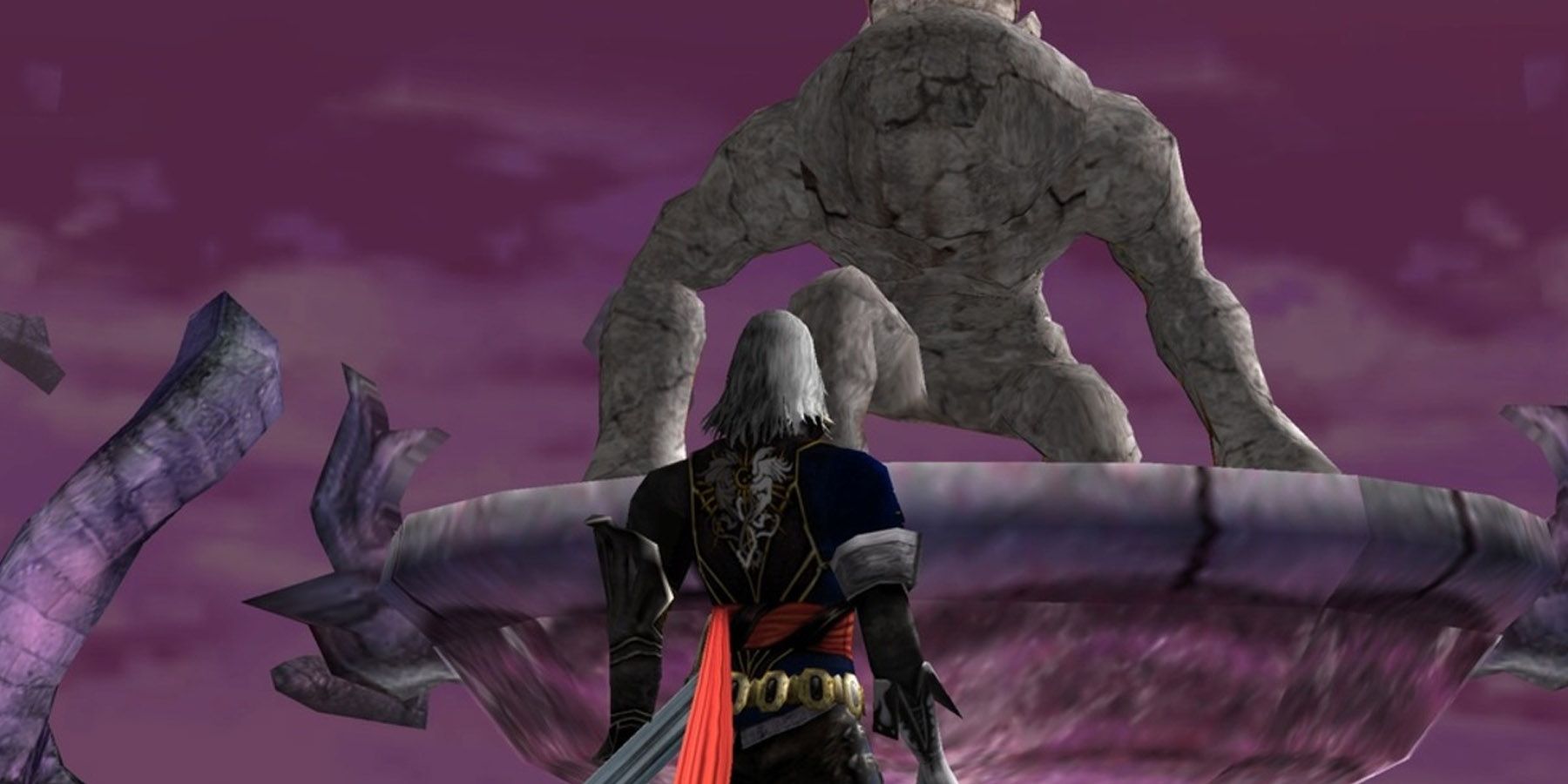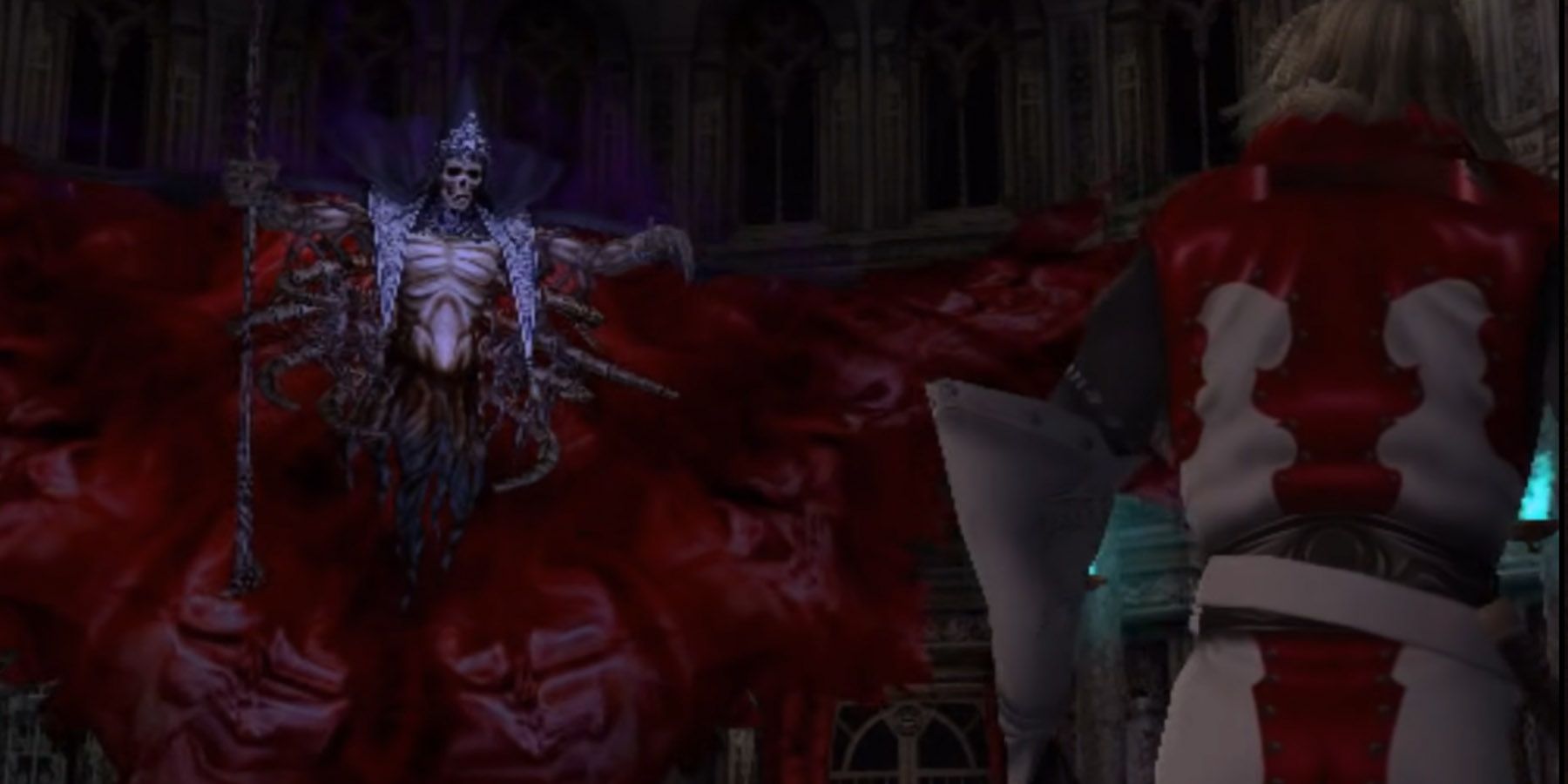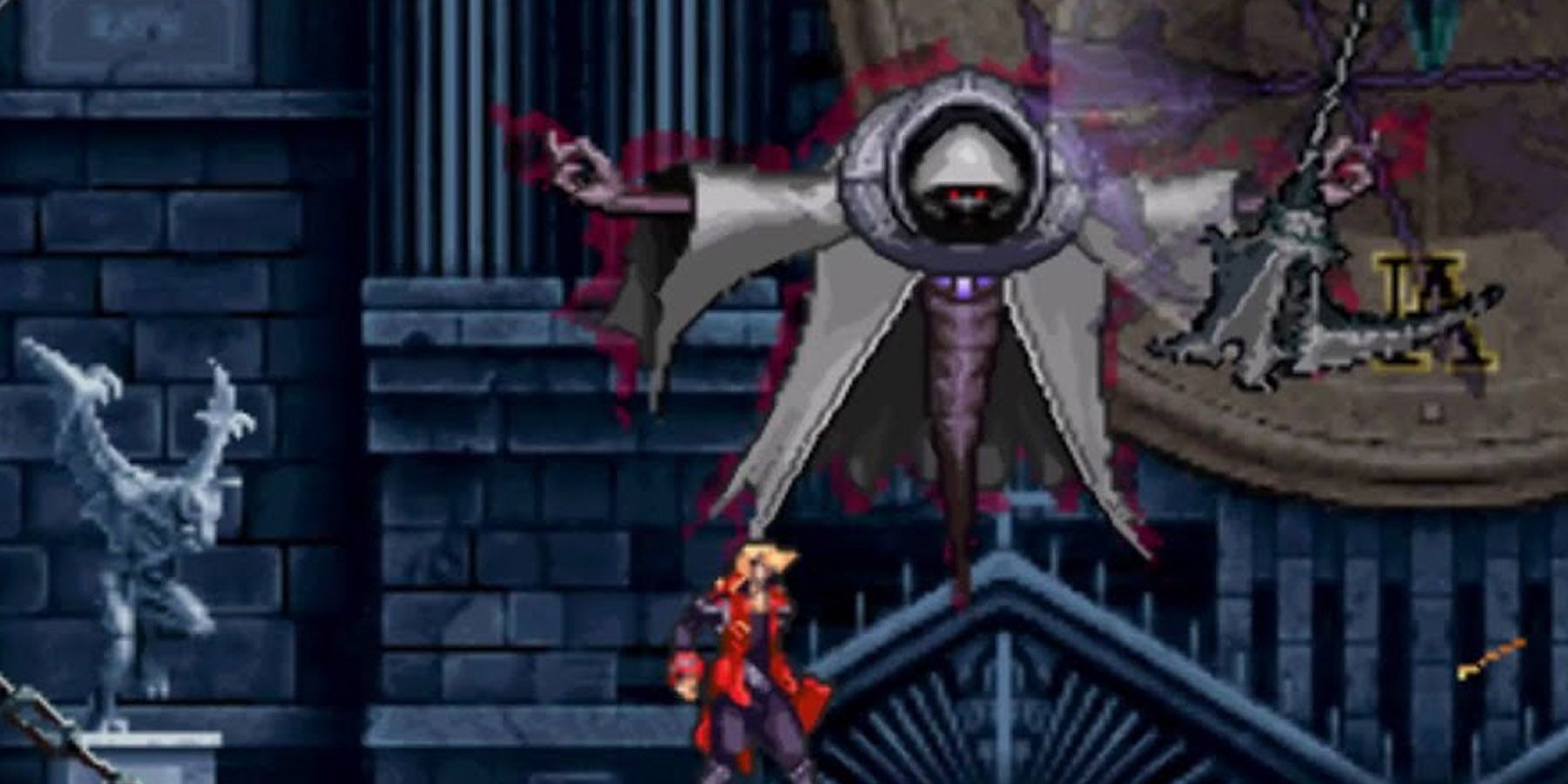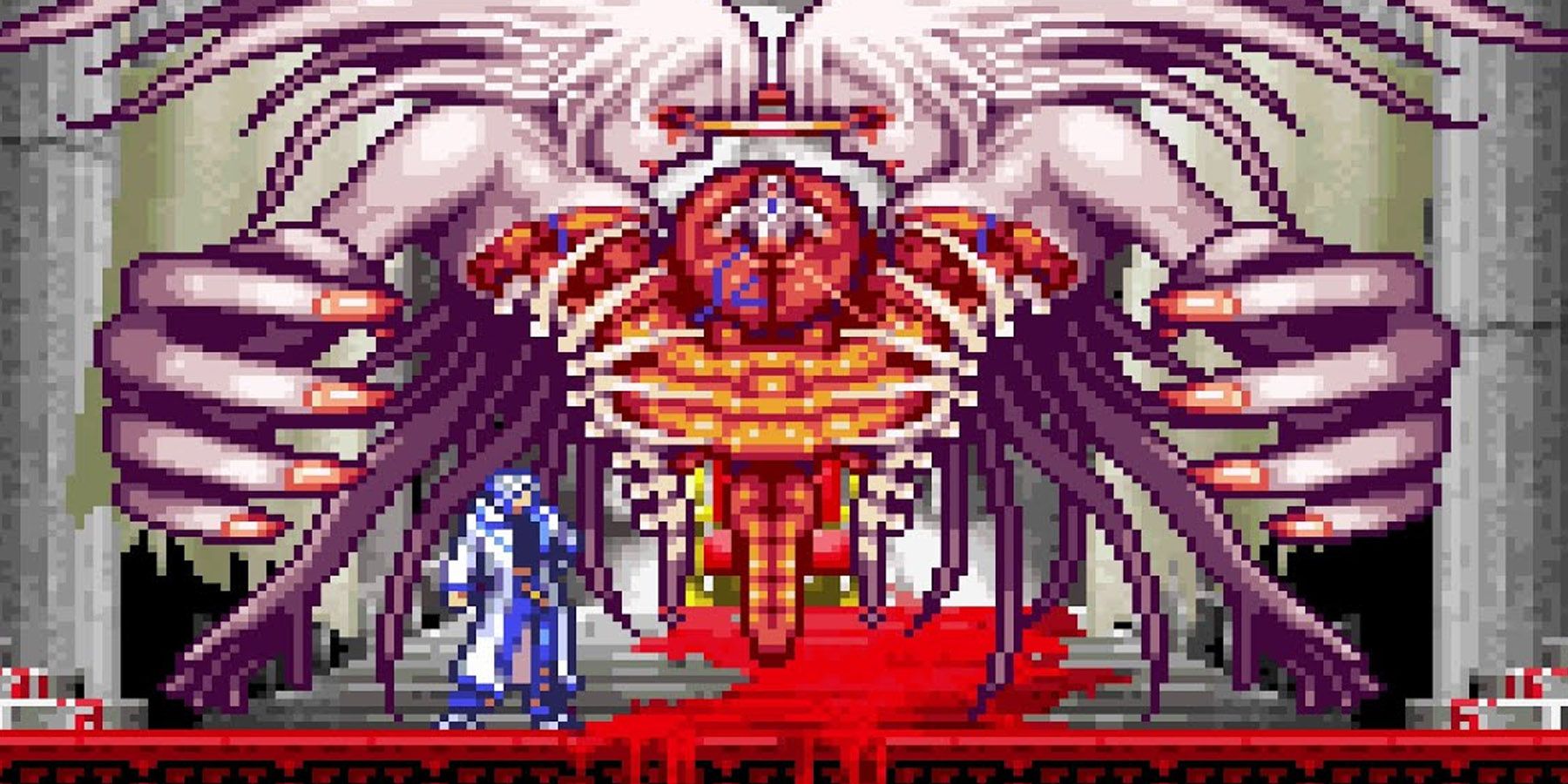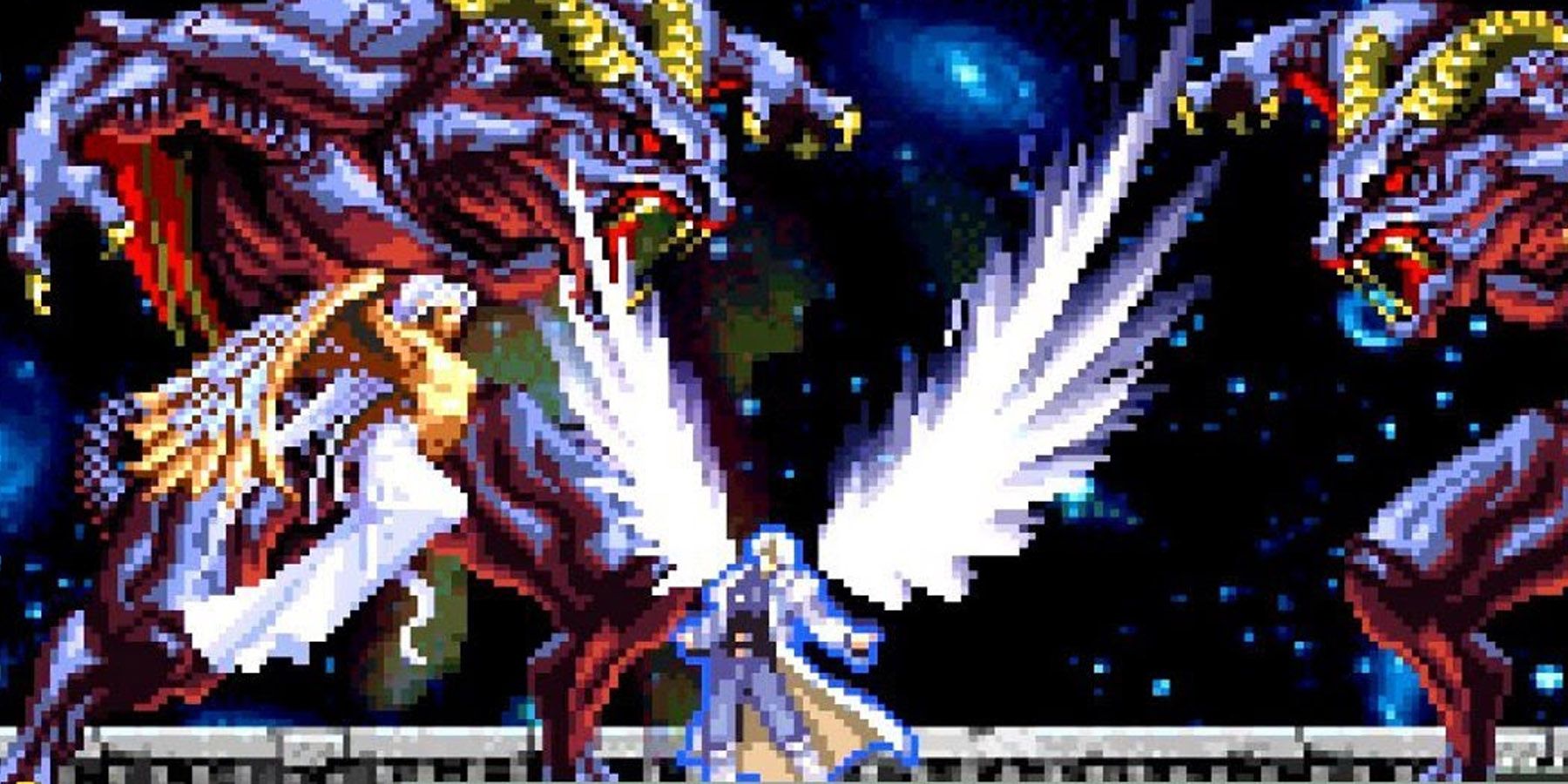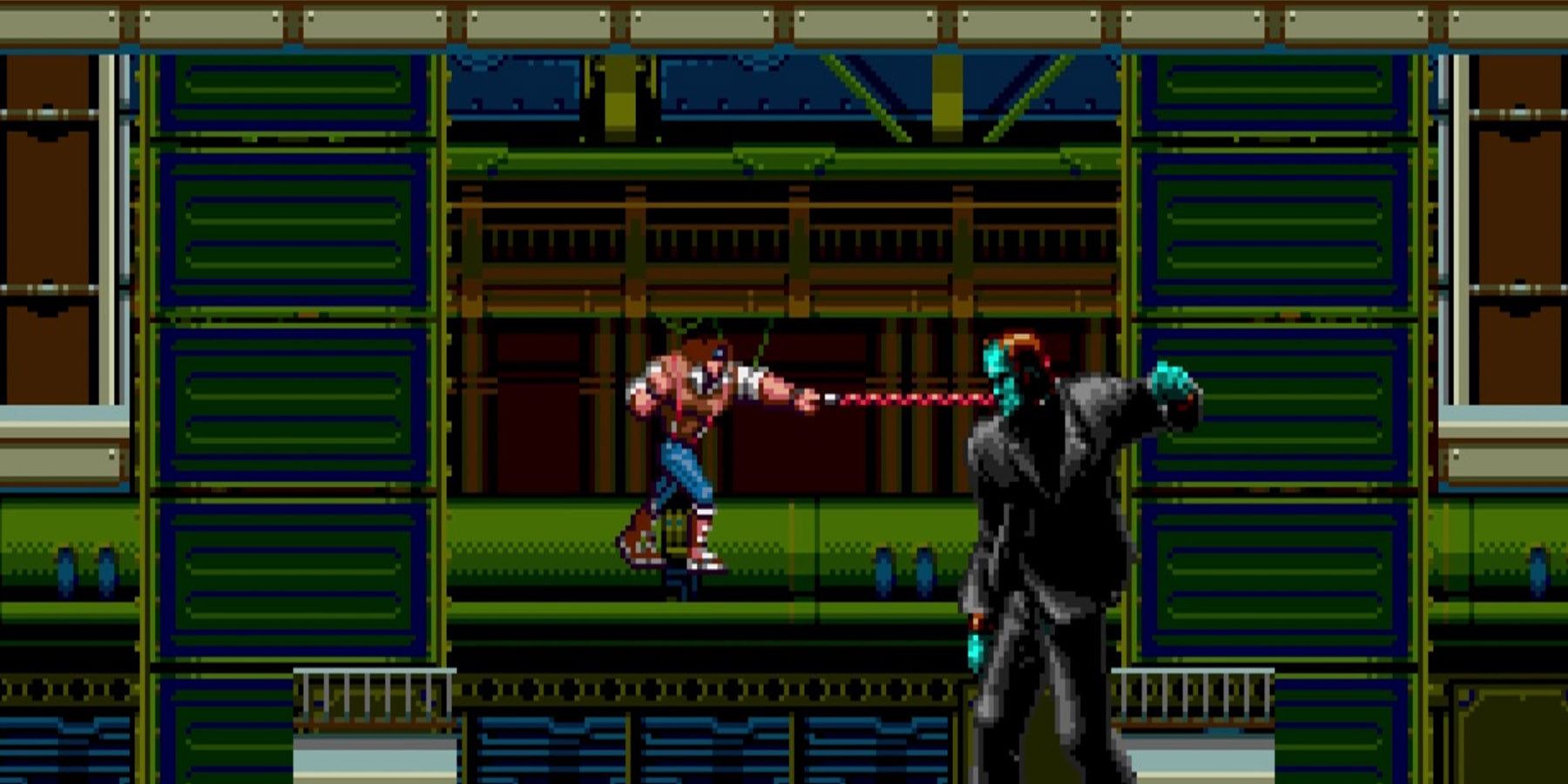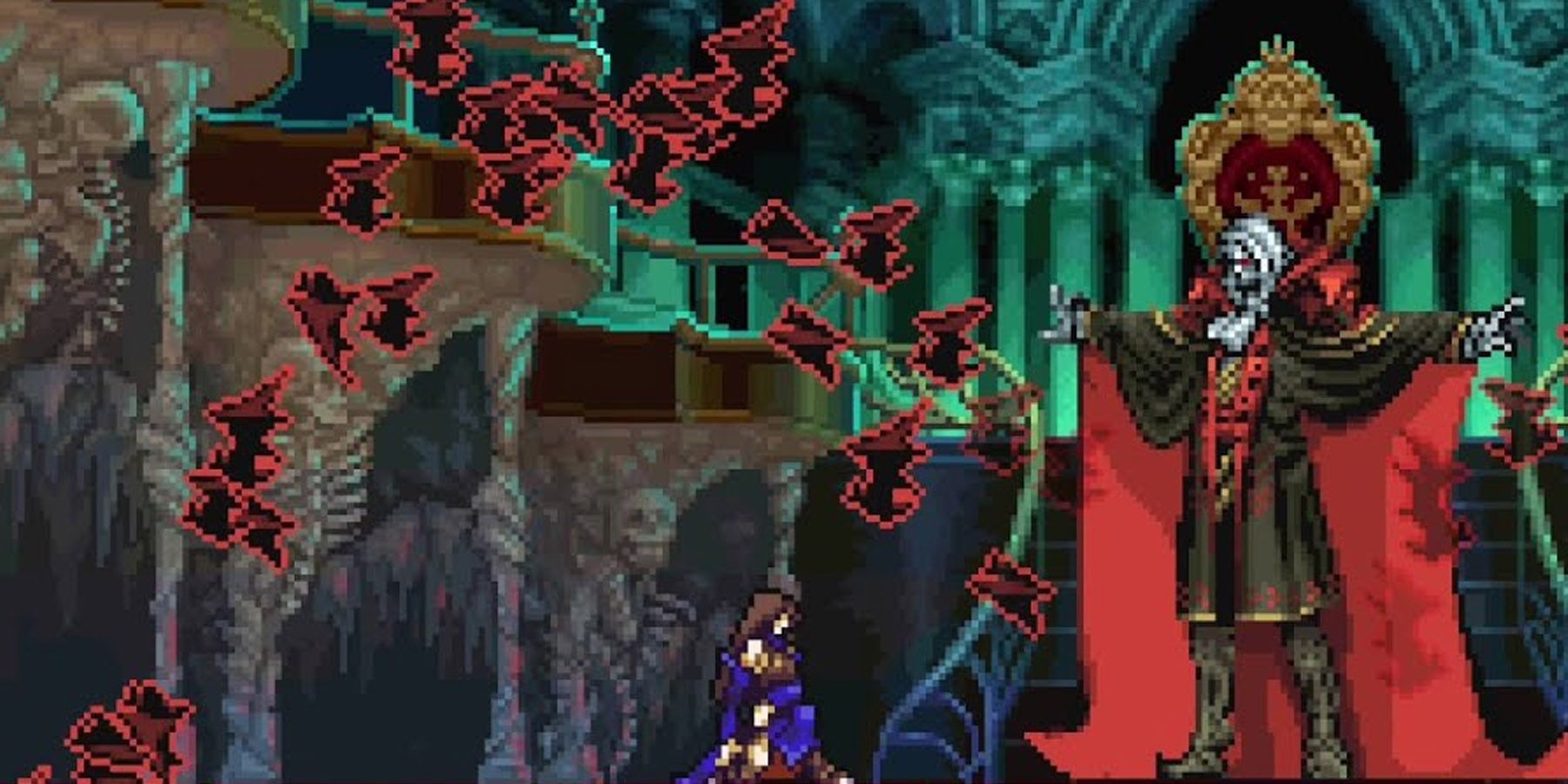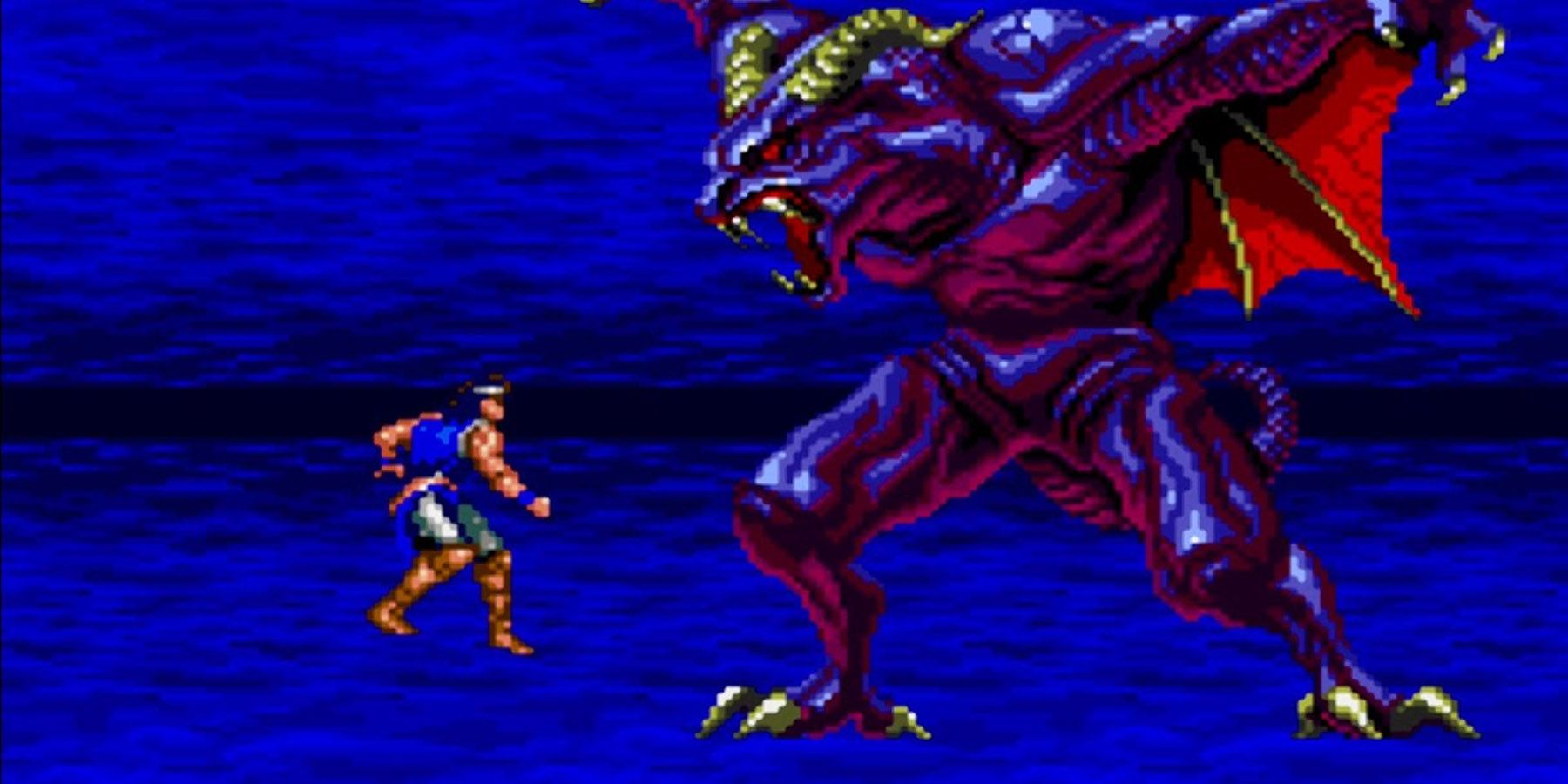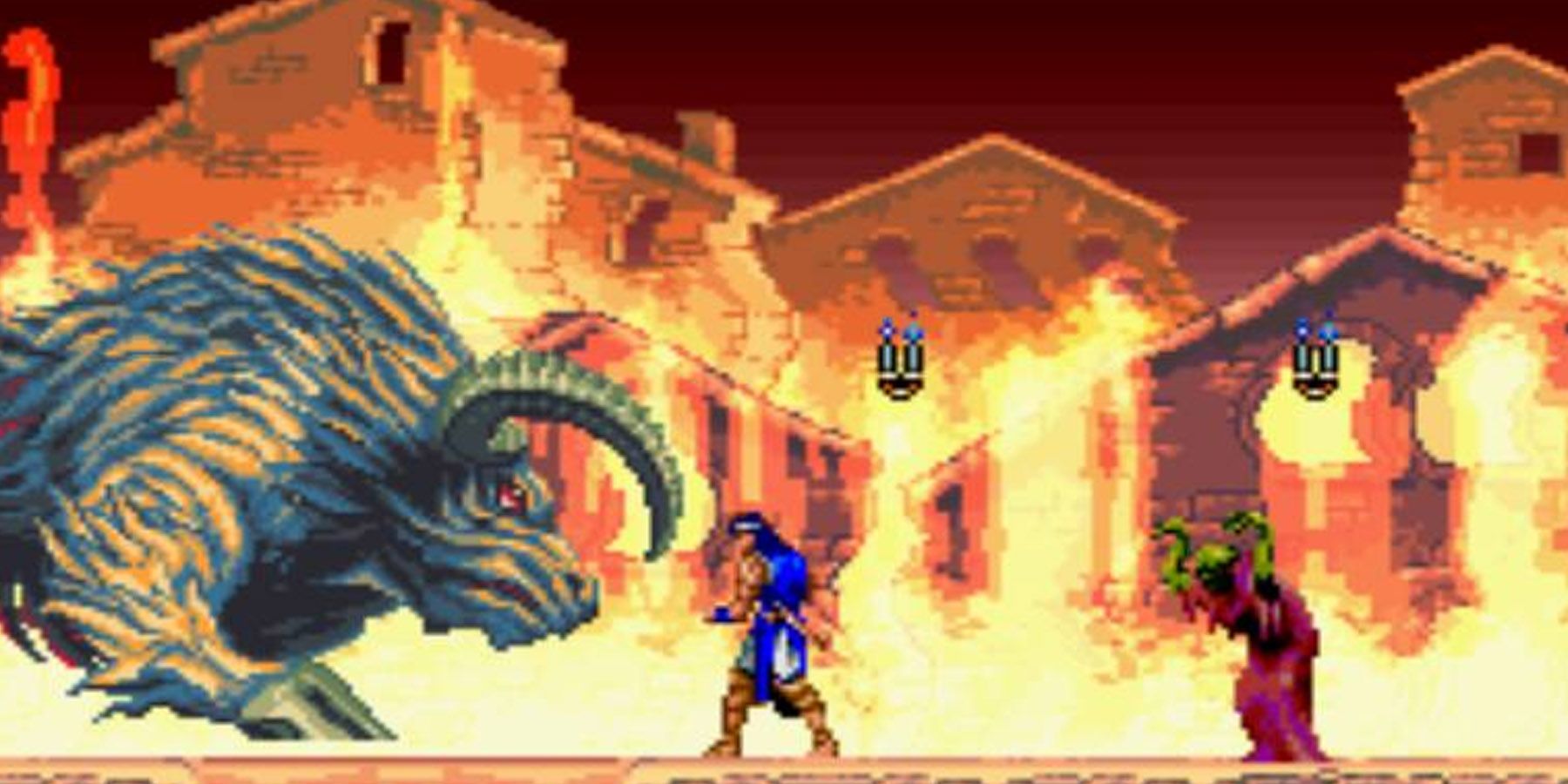Highlights
- Circle of the Moon's boss fights are difficult due to clunky controls, requiring players to master janky tech and balanced stats.
- Curse of Darkness features balanced boss fights with gimmicks that force players to think outside the box and utilize the game's 3D environments.
- Lament of Innocence emphasizes strategic plays over hack-and-slash glory, with boss fights that reward tactical thinking and mastering attack patterns.
Just as Dracula’s Castle changes in appearance across every Castlevania entry, so too do the guardians that roam its halls. Aside from staples such as Death and Dracula himself, each Castlevania game boasts different sets of bosses that protagonists such as the Belmonts and Alucard have to face before fighting the vampire lord himself.
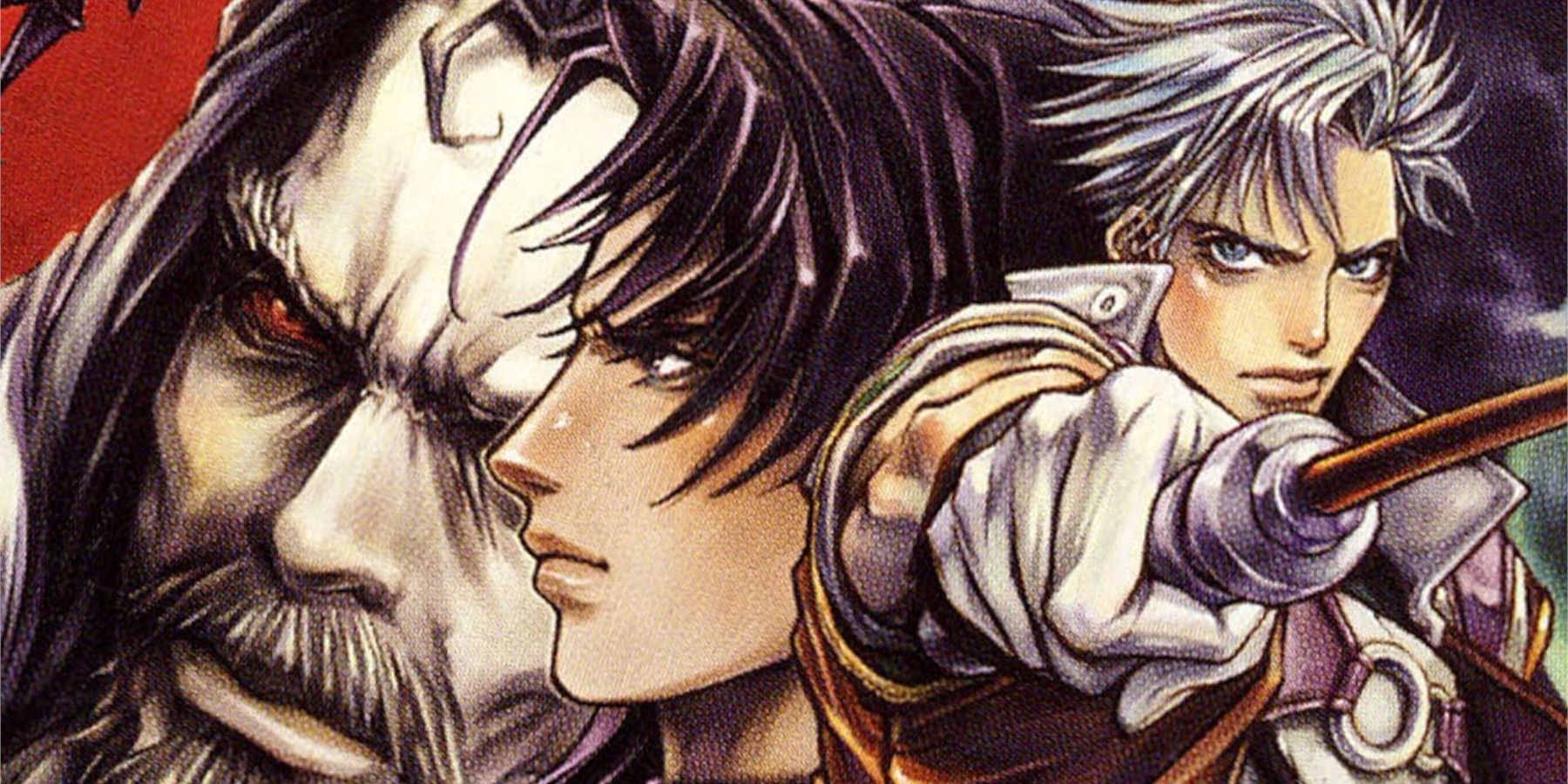
Every Game in the Castlevania Advance Collection Explained
The Castlevania Advance Collection is announced for the NIntendo Switch and has some of the best games in the series from the Game Boy Advance.
While each Castlevania title boasts its fair share of challenging puzzles and fights, its roster of bosses determines just how challenging specific encounters can get for players. Each boss in the castle often possesses unique abilities that test how far the players have come in the game. However, across the franchise’s 37-year lifespan, just which games have the best boss galleries?
10 Circle Of The Moon
Memorable For: Boss Fights Using Janky Controls
| Game Length | 9-16.5 Hours |
| Boss Count | 11 |
| Hardest Bosses | Dracula, Golem, Double Dragons |
Arguably one of (if not) the most challenging classic Castlevania games, where Circle of the Moon excels in level design, it fails in terms of technical gameplay. Nathan Graves’s clunky controls with the Hunter Whip and the game’s lackluster item drop rates make Circle’s boss fights absurdly difficult, making each boss defeat worthy of bragging rights.
The game’s RPG-lite elements mean difficult boss fights require juggling Nathan’s janky tech with the right leveled-up stats and DSS card combos. While an easy fight with Cerberus is balanced with decent match-ups against Death and Golem, players need to get their cheese on to deal with the huge area presence of the Double Dragons and Camilla’s bullet-hell mechanics.
9 Curse Of Darkness
Memorable For: Gimmicky But Balanced Bosses
Castlevania: Curse of Darkness
- Platform(s)
- PS2 , Xbox (Original)
- Released
- November 1, 2005
- Developer(s)
- Konami
- Genre(s)
- Action-Adventure
| Game Length | 12.5-31.5 Hours |
| Boss Count | 14 |
| Hardest Bosses | Death, Wyvern, Dullahan |
Hector’s peaceful life is torn to shreds when the actions of a former rival result in his wife being burned at the stake, forcing the Curse of Darkness protagonist to rely on his relinquished Devil Forgemaster powers for revenge. As Hector is not a Belmont, he instead uses a variety of weapons alongside a “crafting” system to create allies in the form of Innocent Devils to aid him in the game’s decent share of boss fights.
Tedious 3D environments aside, Curse of Darkness boss fights are some of the most balanced in the series. Game-exclusive bosses such as Crazy Armor, Dullahan, and the Wyvern utilize gimmicks to force players to think outside the box. Meanwhile, classic bosses such as Death, Legion, and even mainstay Dracula alluded to their classic 2D playstyles while taking advantage of the game’s 3D environments for more engaging mechanics.
8 Lament Of Innocence
Memorable For: Strategic Versus Hack And Slash Bosses
| Game Length | 8-13 Hours |
| Boss Count | 13 |
| Hardest Bosses | The Forgotten One |
Considered the first canonical game in the franchise, Lament of Innocence chronicles the adventures of Leon Belmont as he traverses Castlevania to save his kidnapped beloved from the clutches of Dracula. This straightforward premise extends to gameplay, with the castle entrance hub area leading to the game’s main locations. Even Leon’s kit prioritizes simplicity to pave the way for tactical plays, as players can enhance sub-weapons with elemental attacks, while his parrying gauntlet can house Relics for special abilities.
While not as action-packed as Devil May Cry 3 for the same console, the PS2 title’s boss fights encourage strategic plays over hack-and-slash glory. Franchise staples such as Golem, Medusa, and Succubus offer a throwback to their 2D moveset, making Leon’s new attack offerings more satisfying. Likewise, finding hidden bosses such as the Elementals and the Forgotten One make the search worthwhile courtesy of their upgrade drops.
7 Portrait Of Ruin
Memorable For: Boss Fights Enhanced By Pair Mechanics
Castlevania: Portrait of Ruin
- Platform(s)
- Nintendo DS , Nintendo 3DS
- Released
- December 5, 2006
- Developer(s)
- Konami
- Genre(s)
- Action-Adventure
| Game Length | 9.5-23.5 Hours |
| Boss Count | 25 |
| Hardest Bosses | Dullahan, Dracula |
Having Jonathan Morris and Charlotte Aulin on screen fills Portrait of Ruin with a delightful mix of whip-tastic melee and flashy spellcasting effects, extending to boss fights that require new approaches to overcome. Having an AI handle an ally while players focus on a main hero means choosing between Jonathan’s precision strikes or Charlotte’s more targeted spells, adding extra challenge even to classic bosses such as Medusa and Frankenstein’s Creature.
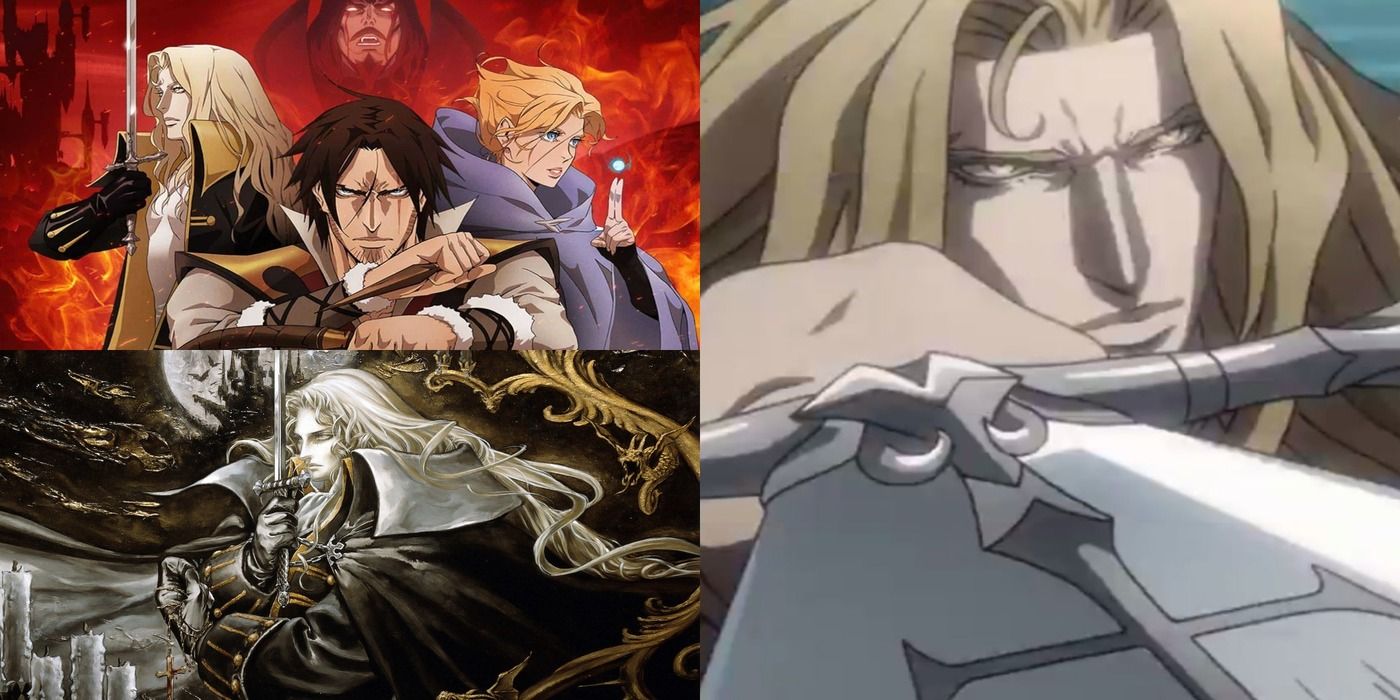
Netflix's Castlevania: 6 Things About Alucard The Show Changed From The Games
A unique and intriguing character, Alucard is much more complex in the Castlevania Netflix adaptation than he is in the original games.
Moreover, the Dracula and Death boss fight tandem can test a player’s knowledge of the game’s mechanics, as they may need a combination of the right Charlotte buffs and Dual Clashes to make a meaningful difference after bypassing their attack patterns.
6 Aria Of Sorrow
Memorable For: Tactical Souls Encourage Experimentation
| Game Length | 7-14 Hours |
| Boss Count | 13 |
| Hardest Bosses | Chaos |
While not a Belmont, Soma Cruz’s access to Red Souls transforms Aria of Sorrow into an ability collection-fest. Theoretically, most bosses go down from weapon attacks aided with potion spams, especially since most bosses still telegraph their attacks. Thankfully, Soma’s responsive controls can help players facilitate dodges and attacks much faster. In turn, Aria’s more fluid combat also incentivizes experimenting with Red Souls to alternate Castlevania fighting styles.
Frequent fights with the Manticore and Great Armor should get Soma used to tougher one-time bosses such as the Headhunter. Meanwhile, memorable boss fights with Graham and Belmont would test the player’s Red Souls arsenal, especially since their attack patterns alternate frequently.
5 Dawn Of Sorrow
Memorable For: Tougher Bosses Encourage Tactical Soul Hunting
Castlevania: Dawn Of Sorrow
- Platform(s)
- Nintendo DS
- Released
- October 4, 2005
- Developer(s)
- Konami
- Genre(s)
- Action-Adventure
| Game Length | 9.5-24.5 Hours |
| Boss Count | 16 |
| Hardest Bosses | Dario, Rahab, Menace |
The visual imagery of Soma tapping into his dark heritage makes Dawn of Sorrow a satisfying sequel to Aria, with the Tactical Soul System pushing a player’s ability-collection limits with screen-filling bosses that demand more tactical prowess. While players still collect and upgrade Souls, more versatile bosses require memorizing their patterns and forming counter-measures with the appropriate Souls.
For instance, gimmicks such as Gergoth’s cramped arena and Zephyr’s immense speed can turn fights into a world of hurt for Soma. Even if players manage to intercept their attacks, lacking countermeasures against them transforms fights into wars of attrition. Considering the presence of bosses with multiple gimmicks, such as swarming Abaddon and the rather tricky Dracula-Soma, players can’t simply depend on their main attacks in Dawn.
4 Bloodlines
Memorable For: Boss Fight Strategies Alternate Based On Character Playstyles
| Game Length | 2.5-6 Hours |
| Boss Count | 21 |
| Hardest Bosses | Gargoyle Bat |
Set during World War 1 in 1917, Bloodlines tasks Belmont descendant John Morris and his best friend Eric Lecarde to venture into Castlevania to defeat Dracula. Despite the game’s traditional two-character setup and rather limited Sega Genesis initial release, Bloodlines capitalizes on its platform’s processing power to create dynamic stages and colorful boss fights.
Gone is the traditional strategy of figuring out an enemy’s weakness, especially when John’s melee-oriented and Eric’s mid-ranged toolkits demand different combat approaches. For instance, the Gear Steamer may predictably throw gears while exposing its vulnerable core. However, John may prefer going up close to secure damage, while Eric has more wiggle room to maneuver due to his spear. The game requiring players to fight all bosses before the Dracula fight also incentivizes mastery of their patterns, increasing the challenge.
3 Order Of Ecclesia
Memorable For: Glyph Combos Encourage Diversified Boss Fights
Castlevania: Order Of Ecclesia
- Platform(s)
- Nintendo DS , Nintendo 3DS
- Released
- October 21, 2008
- Developer(s)
- Konami
- Genre(s)
- Action-Adventure , RPG
| Game Length | 10.5-21.5 Hours |
| Boss Count | 15 |
| Hardest Bosses | Brachyura, Eligor, Blackmore |
The absence of the Belmonts in the 1800s meant it was up to the Order of Ecclesia to stop Dracula, with amnesiac Shanoa tasked with the deed. Equipped with special Glyphs, Order of Ecclesia players can use various weapons and attacks to defeat the game’s gauntlet of bosses, all providing decent challenges to Castlevania gameplay.
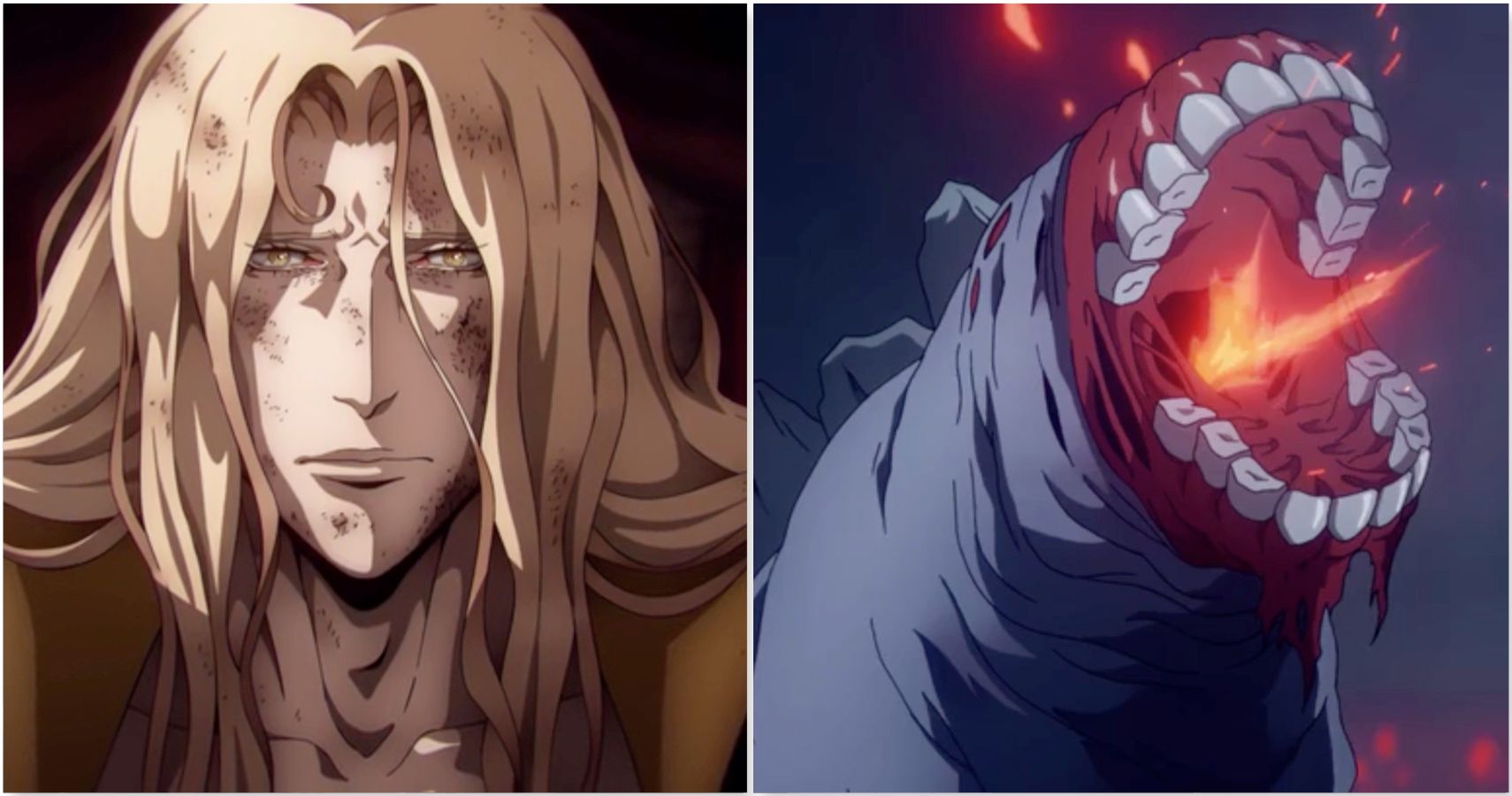
Castlevania: 5 Things The Entire Anime Series Did Right (& 5 Things It Did Wrong)
The Castlevania anime series pleased a lot of fans of the game franchise, but there are a few aspects where it did more wrong than right.
Granted, the opportunity to Glyph spam with go-to attacks such as Nitesco beams and Melio Falcis slashes can make quick work of opponents. However, certain boss fights pose dynamic challenges to secure victory. For instance, getting rid of Eligor’s crossbows is highly recommended to ensure they don’t attack players when they target his weak spots. Likewise, crab-like Brachyura attacks in different ways depending on Shanoa’s position.
2 Rondo Of Blood
Memorable For: Challenging Early Era Boss Gauntlet
| Game Length | 3.5-7 Hours |
| Boss Count | 20 |
| Hardest Bosses | Dullahan, Shaft |
Richter Belmont’s quest to defeat Dracula in Rondo of Blood boasts some of the most polished graphics for a Castlevania title of its era, which worked in tandem with its more fluid gameplay and selection of challenging bosses. This approach to more precision mechanics gave players more room to outmaneuver bosses and adjust to their attack patterns, which players needed considering the game’s challenging boss gauntlet.
For instance, the Carmilla-Laura tandem in Stage 4 needs players to watch out for Carmilla’s projectiles and Laura’s stun that can drain precious Hearts. Dracula’s servant Shaft also demands tactical prowess from players, as his boss battles will force players to fight through classic bosses first before fighting him.
1 The Dracula X Chronicles
Memorable For: Punishing Boss Roster
| Game Length | 5-13.5 Hours |
| Boss Count | 22 |
| Hardest Bosses | Hydra, Dracula |
Despite being a remake of Rondo, alterations to the overall castle format and bosses make Dracula X Chronicles a new beast to deal with. Bosses still need players to work their way past a boss’s attack patterns, this time complemented with improved 2.5 graphics. The similarity in bosses means the Golem remains a tough enemy to beat should players fail to read their attack patterns carefully, as well as a manageable two-stage face-off with Death.
Where Dracula X Chronicles challenges a player’s mettle can be seen against the new Stage 5B boss Hydra, whose multi-headed form is considered the hardest boss in the game due to its preference for simultaneous attacks. Players looking for an extra challenge may appreciate the altered boss gauntlets in Boss Rush mode.

